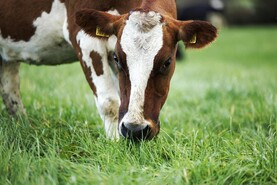Before my departure for New Zealand, I was bracing myself for the extremes of what winter in the southern hemisphere was going to throw at me. Having spoken with a Kiwi earlier that month who mentioned temperatures of minus 10°C and the chance of snow, I thought it was best to go prepared.
As the locals put it, “if it’s not raining, it’s snowing and if it’s not foggy, it’s frosty”. Even better, some days manage to squeeze in all of the above.
In saying all that, since my arrival in New Zealand, the mornings have been admittedly cool with the odd touch of frost with the sun coming out in the afternoon to be a lovely day. To date, no snow has fallen despite a forecast of 40cm one night, but you can see the snow-covered mountain ranges that surround us.
Travel to New Zealand
Unaware of the MH17 plane crash over the Ukraine when travelling, I was quickly made aware of what had unfolded on 17 July, over two months ago now, when I arrived in Sydney airport.
Upon arrival to New Zealand, one can’t help but take note of the stark contrast in terms of landscape and scenery to be seen when compared with Ireland. In the immediate hinterland of Christchurch Airport, you’re straight into the heart of the Canterbury Plains, which are noted for being as flat as the table. They then quickly rise to the mountains.
Once you cross the Rangitata river, a more rolling and undulating landscape can be seen. This is characteristic of the Fairlie Plains, within which my host farm is located. A common sight in the New Zealand landscape around where I’m placed are pivot irrigation units. Where Irish Dairy farmers have invested heavily in cubicle housing and slurry storage, New Zealand dairy has equal levels of investment in irrigation units to make their grass grow.
I am working for Ryan and Tina O’Sullivan of Glenire Farm Limited located outside Fairlie in South Canterbury in the South Island.
They farm 900ha, of which 500ha is the home farm and the remainder is composed of two run-off out farms. The milking platform extends to 350ha to accommodate their 1,300 milking cows and a 60-bail De Laval rotary parlour.
From general consensus in Ireland, I wasn’t expecting my host farm to have such a range of modern machinery being self-sufficient in almost all farm tasks. They also have a meal feeding system in the parlour which isn’t typical of low-cost New Zealand systems.
Cultural differences
The first cultural change that struck me in New Zealand was how honest and trusting the people are. There isn’t a tradition of locking your house and it’s not uncommon to see parked cars with the keys left in the ignitions or sometimes running!
Since my arrival to Glenire Farm, my daily tasks have changed and developed with the seasons. Initially, I was involved in moving breaks for cows, heifers and bulls on kale and beet. It’s common practice to outwinter livestock in New Zealand and graze fodder crops. Transitional crops were grazed before returning to grassland.
Due to low rainfall, the farm grass cover has reduced from 700kg/DM/ha to 500kg/DM/ha since my arrival. Silage was fed out to all animals outdoors to meet feed requirements. I spent some time tagging heifers and dosing cows and heifers pre-calving.
I learned how to treat lame cows and do some preventative hoof paring. After a couple of weeks, due date for calving was drawing near and calves slowly but surely began appearing. Within a very short period of time, 35 to 40 calves were being born daily.
Calving full flow
Our chores then turned to collecting calves, tagging them according to their sex and recoding the mother for breeding purposes. The calved cows are drafted out and put into a colostrum herd and the calves are stomach tubed with three litres of freshly collected milk.
To emphasise the efficiency of the farm breeding programme, 65% of the herd was calved within three weeks, with the remainder expected within the next six weeks.
To date, we have reared 300 replacement heifer calves. They are fed once a day on a diet of milk and meal. After a four-day withdrawal period, the calved cows are placed in the milking herd. After a six-week period, I have already seen the milking herd grow to 700 cows. The cows are fed 1.5kg of rolled wheat and molasses in the parlour and are at present yielding 1.8kg milk solids/cow/day, which is expected to reach 2.1kg by 20 October.
What’s quite remarkable is the sheer scale of operations in New Zealand. We would draft out 100-150 springer cows at a time for calving, which would be considered a substantial herd in itself in Ireland. When you see 600 cows grazing in a paddock or in the collecting yard for milking, the impact is quite significant.
Another contrast to Ireland is how when I arrived there were parts of the farm very muddy from outdoor grazing but this ground has since dried out and has been reseeded into grassland.
I was concerned that not coming from a dairy background would present real barriers and challenges for me to integrate into the dairy system in New Zealand. However, I settled in with ease, having an avid interest in the dairy sector upon completion of my agricultural science degree in UCD and visions of setting up my own dairy enterprise following the removal of milk quotas in 2015.
I am equipping myself with all the necessary skills and experience required to run a low-cost grass-based dairy enterprise in Ireland.
Mark Ward won an Irish Farmers Journal Stephen Cullinan scholarship and is on work placement in New Zealand. This is his first report.






 This is a subscriber-only article
This is a subscriber-only article











SHARING OPTIONS: